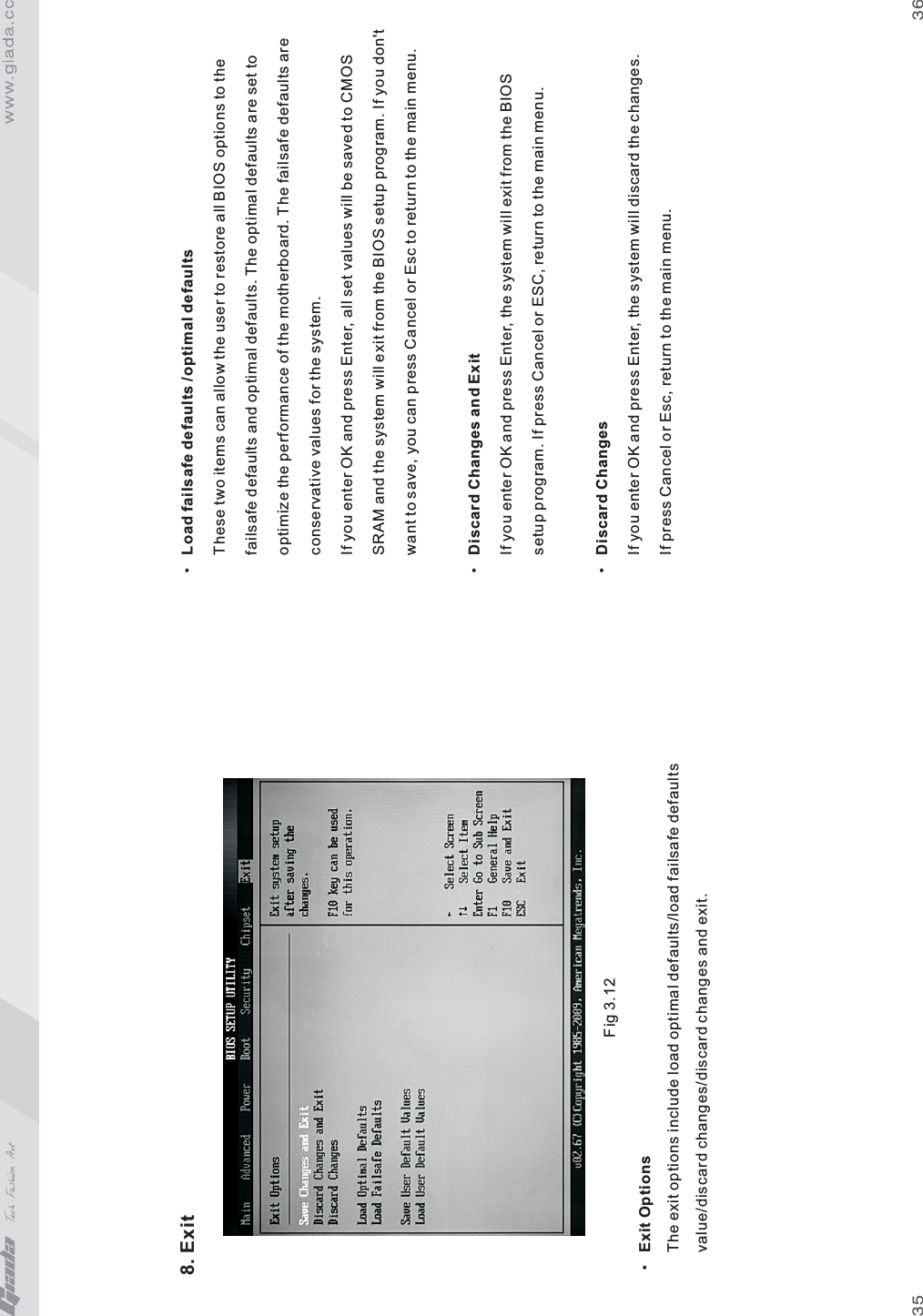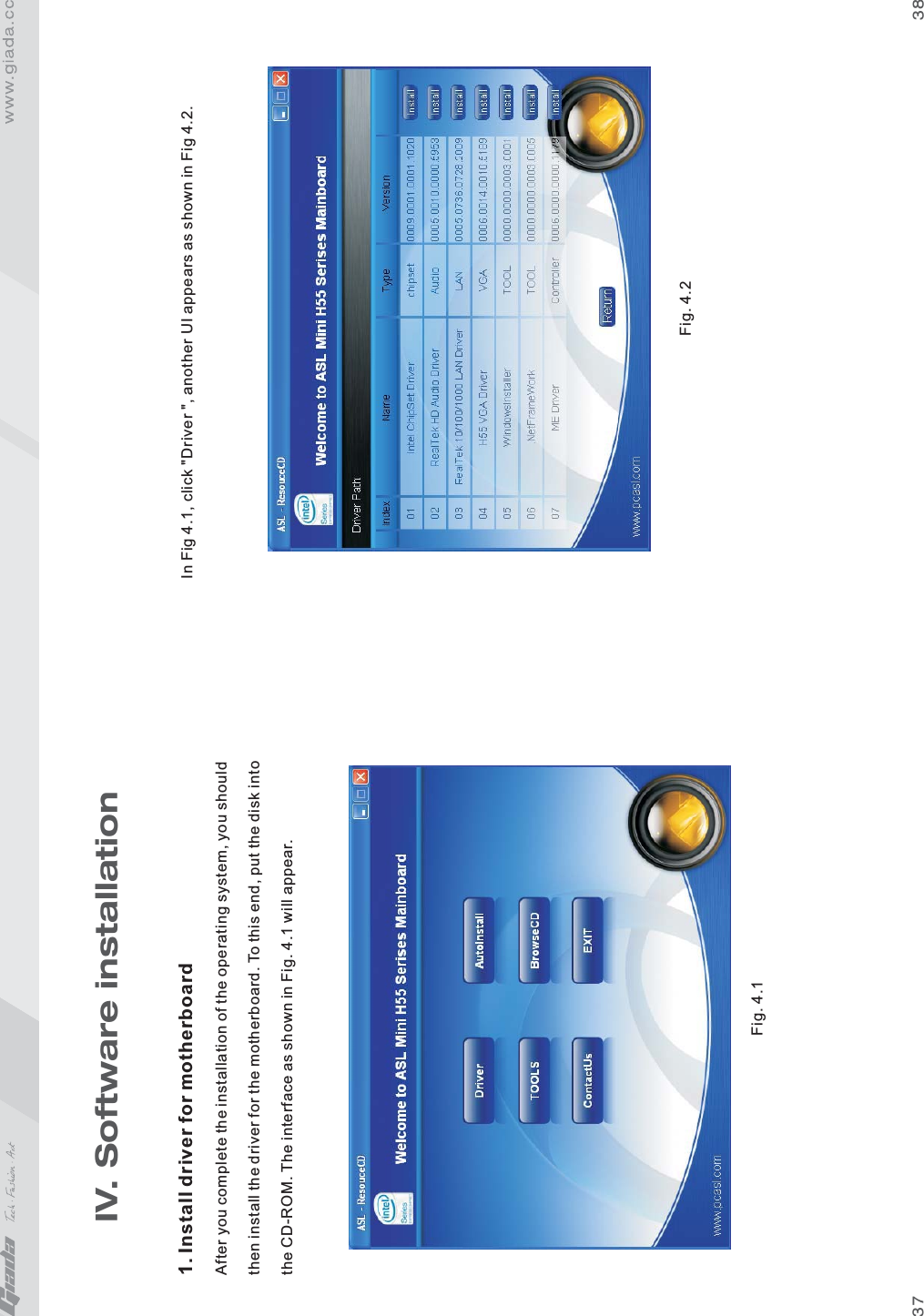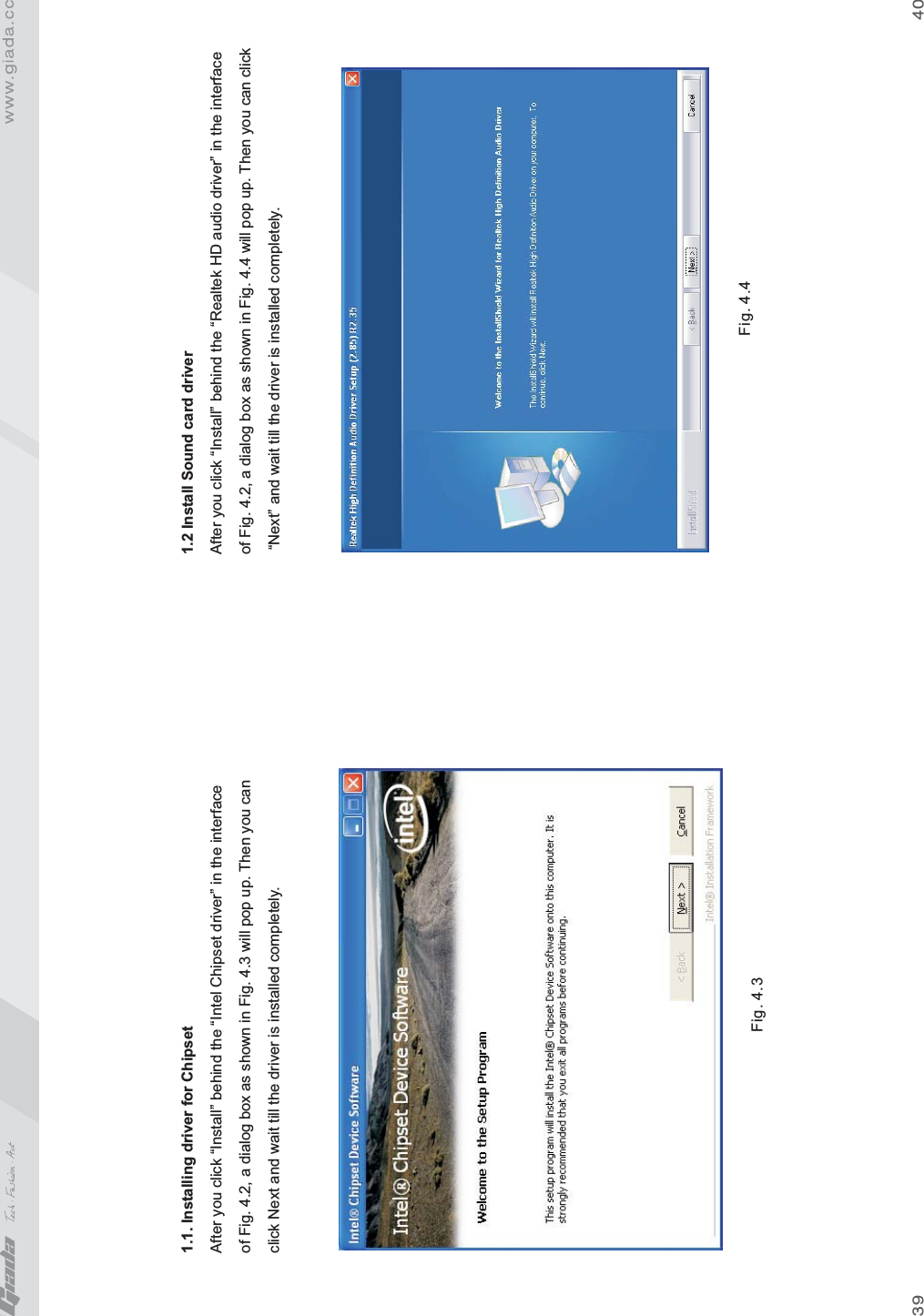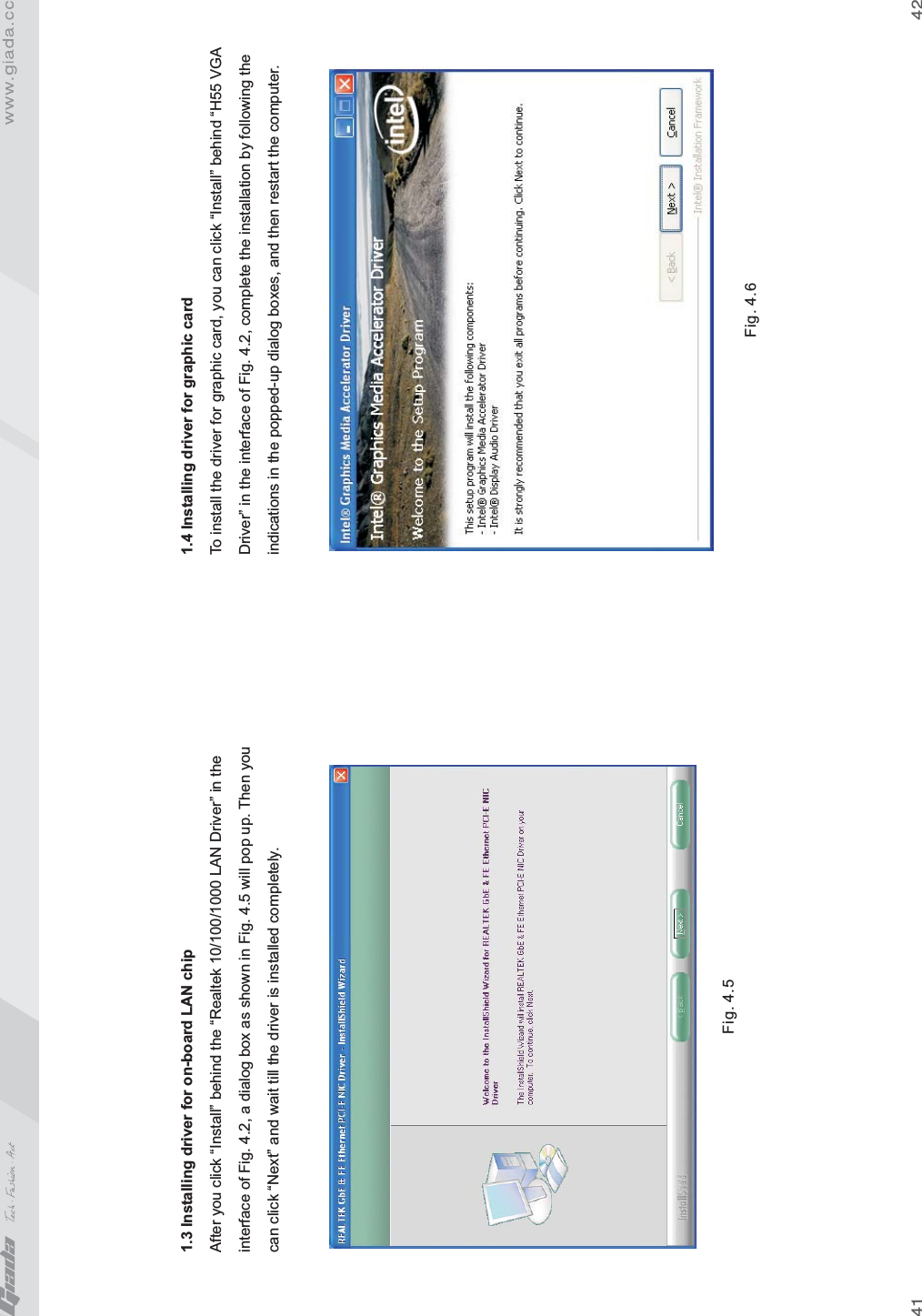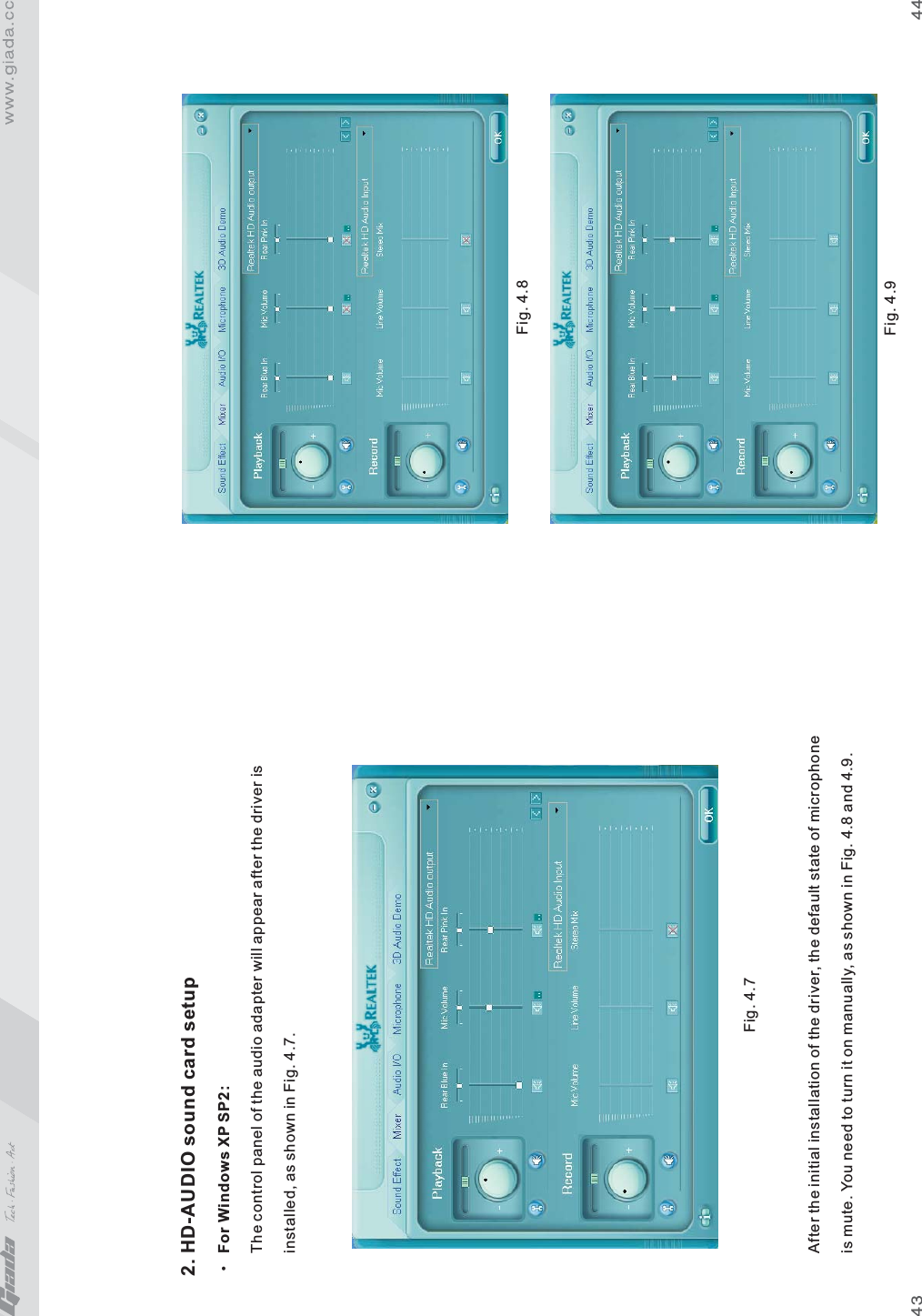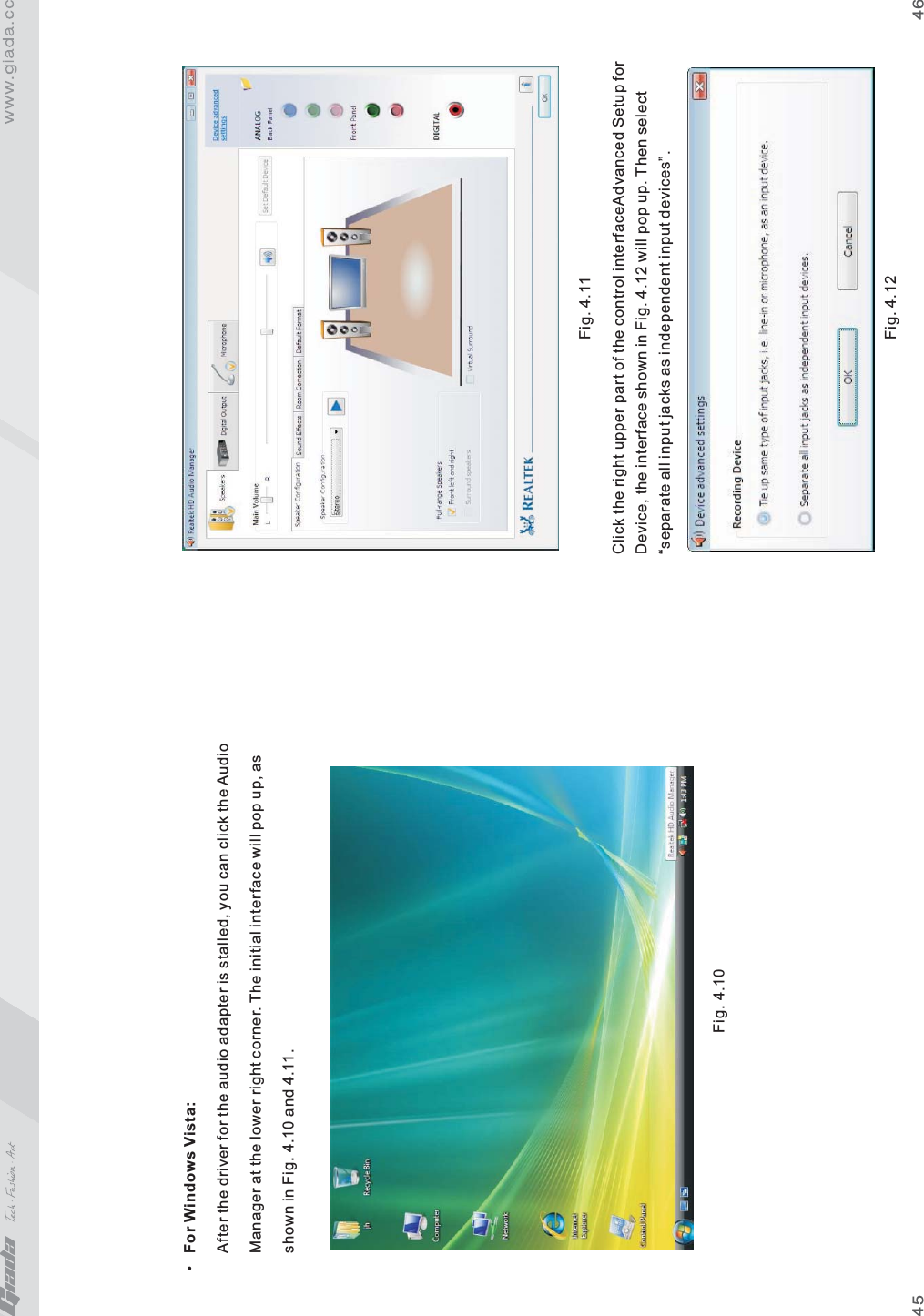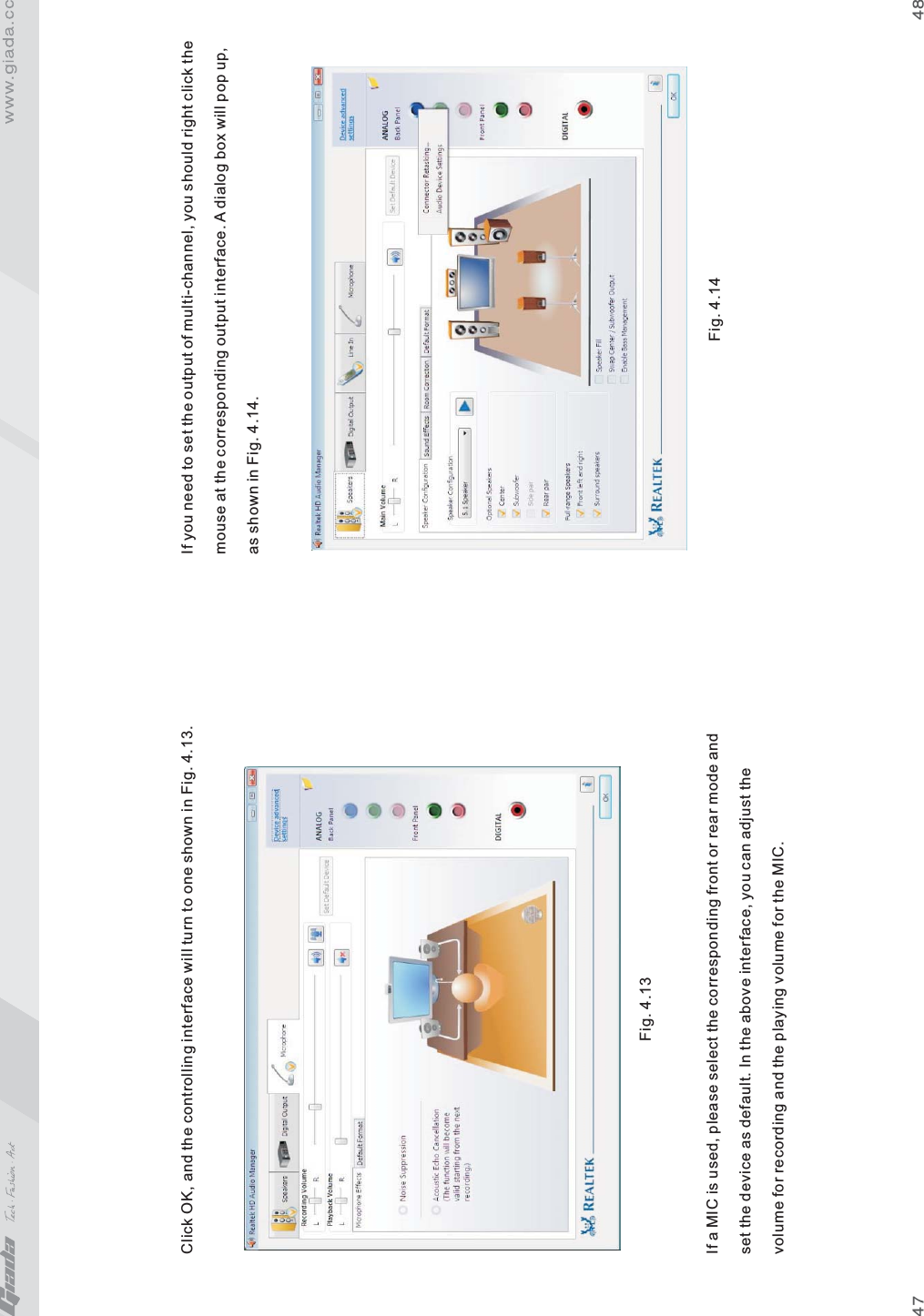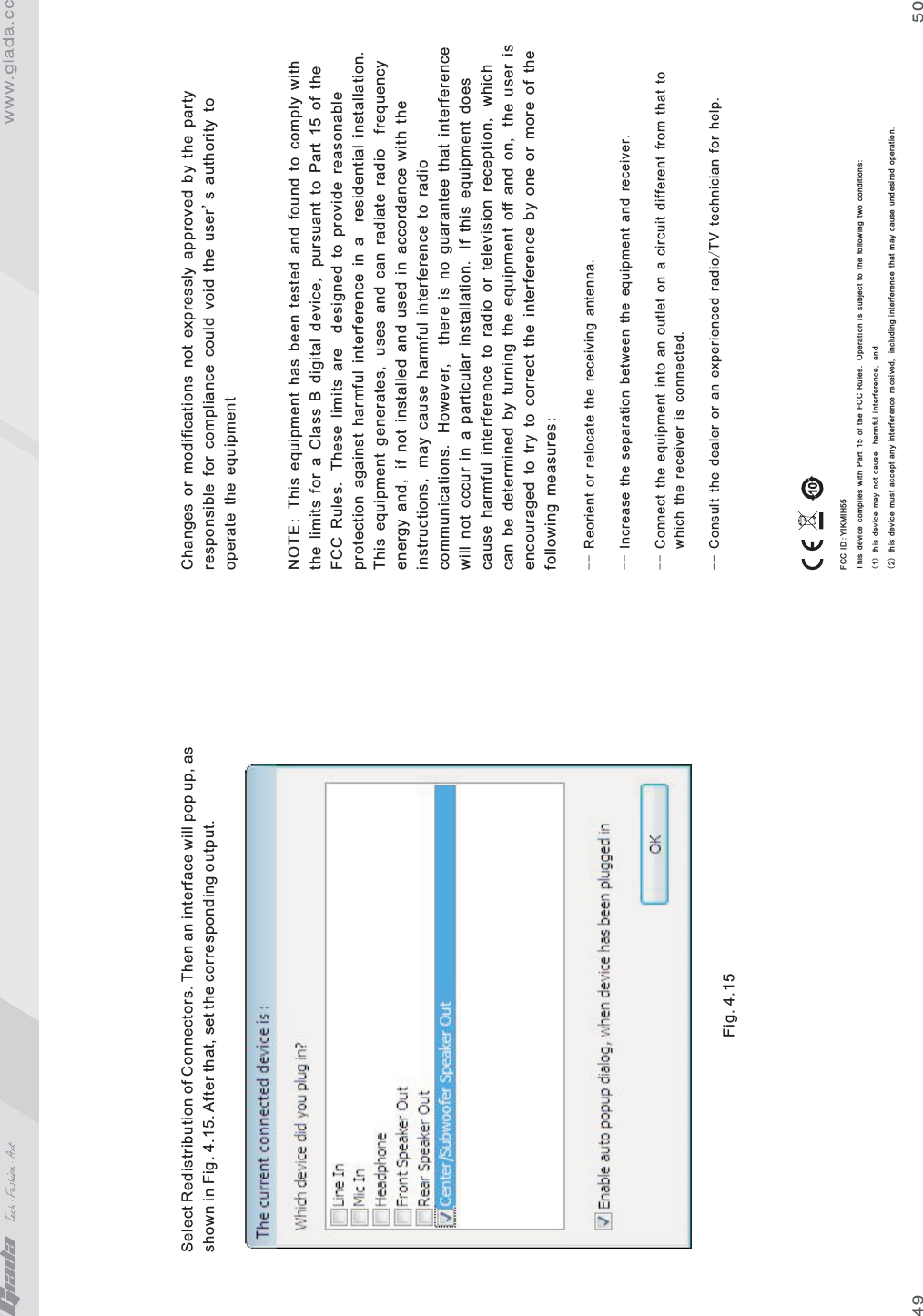Jehe Technology Development MIH55 Mother Board User Manual Giada MI H55 part2 REV1
Shenzhen jiehe Technology Development Co.,Ltd. Mother Board Giada MI H55 part2 REV1
Contents
- 1. Giada MI-H55_User Manual_part1_REV1
- 2. Giada MI-H55_User Manual_part2_REV1
Giada MI-H55_User Manual_part2_REV1
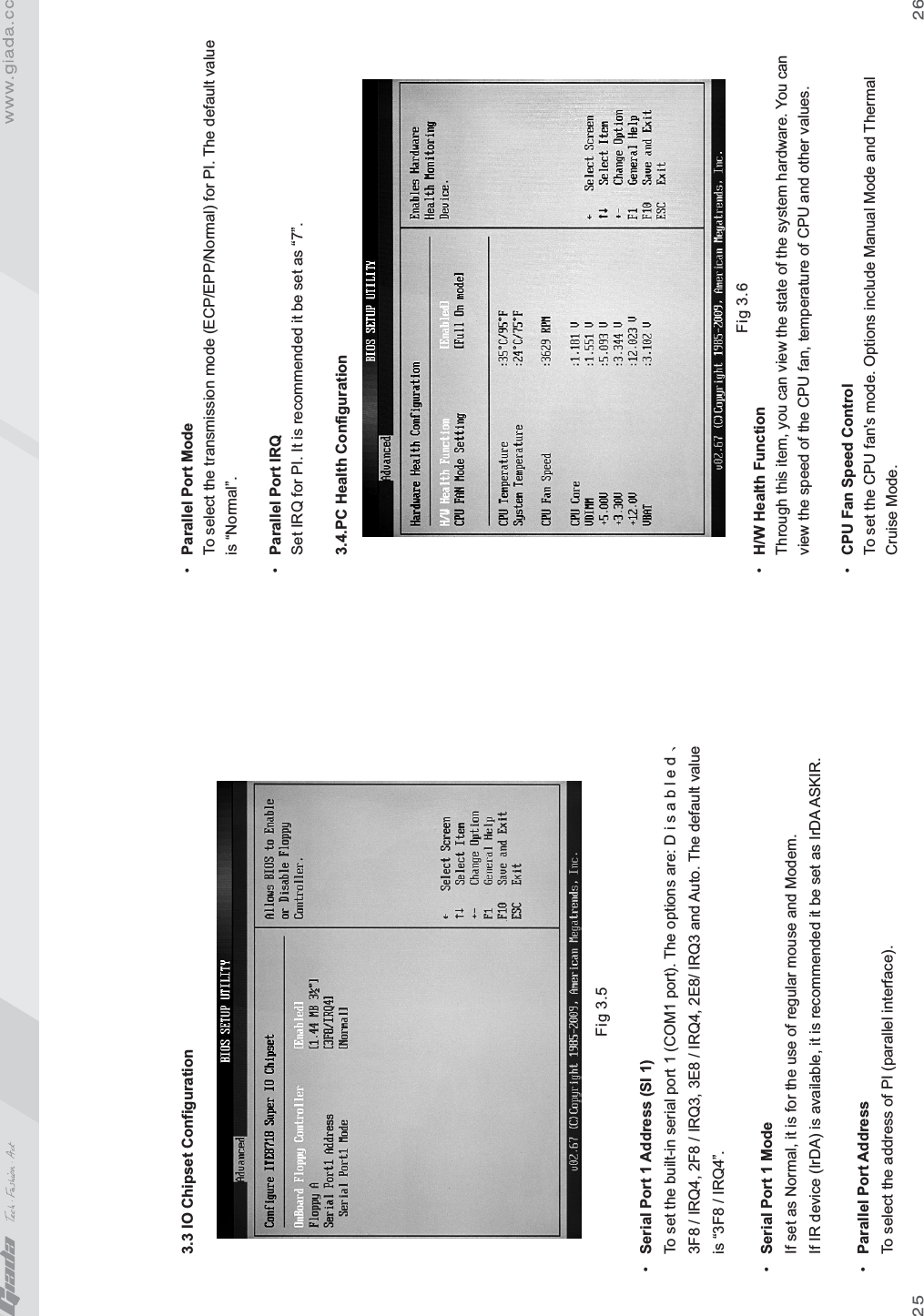
![28274. Power (power management)· To set the power type the system can support.· ACPI APIC support This item allows you decide whether acpi apic form to rsdt indication list. Options are [disabled] and [enabled].· Power Management/APM This item is used for enabling or disabling the APM (advanced power management) function. The default value is “Enabled”. When [enabled] is selected, BIOS can set the system as power-saving mode in accordance with the later setup even if no operating system provides any support.ACPI Version Features Fig 3.7· Power Button Mode The defaulted value ON/OFF indicates that the system will turn ATX switch into a common shutoff button if the ATX switch is in the pressed- down state for less than four seconds. If Suspend is selected, it means the system will enter the sleeping mode if the ATX switch is in the pressed-down state for less than four seconds. Whatever option is selected, the system will be shut off if the ATX switch is in the pressed- down state for over four seconds.· Restore on AC Power Loss This item is used for setting what state the system should be in when the AC power is restored after power interruption. The options and their definitions are as follows: · Power On by PCI Card To start from PCI device.· Wake-Up by PCIE To wake up by PCIE.· RTC Resume If [Enabled] is selected, you can start the system through real-time clock.OptionPower OffPower OnLast StateDefinitionTo allow the system to be in shutoff stateTo allow the system to be started automaticallyTo allow the system to keep the pre-power off state](https://usermanual.wiki/Jehe-Technology-Development/MIH55.Giada-MI-H55-User-Manual-part2-REV1/User-Guide-1317490-Page-2.png)
![30295. Booting · If this item is set as Enabled, the system can be started within five seconds and some detection items will be ignored. The options are [Disabled] and [Enabled].· Quiet Boot To start the system quietly.· Add On ROM Display Mode [Force BIOS] This item allows you to set the display mode of the device's firmware program. The options are [Force BIOS] and [Keep Current].· Bootup Num-Lock (To set the state of Num Lock after start-up). Options are OFF and ON. Quick Boot Fig 3.8 In other words, this item can be used for setting the state of Num Lock for the time the system has been started. It can be set on the basis of the needs of the user and doesn't affect the performance of the computer.· PS2 Mouse Support Set to support PS2 mouse. The available options are [Auto] and [Disable]. The default value is Auto.· Wait For“F1” If any Error (The system waits the user to press F1 if any error occurs from the computer). The options are Disable and Enable. Normally, it is set as Enable. Then if the computer has any error, a line of English words will appear on the screen, reminding the user of pressing F1 to enter CMOS for setup. If it is set as Disable, that line of English words won't appear. However, if the words “wait…” appear during the start up process and you press Del, the system can also enter CMOS for setup.· Hit “Del” Message Display (Information is displayed when the computer is started, suggesting the user can press “Del” to enter the state for CMOS setup). The options are [Disable] and [Enable]. Normally, [Enable] is selected. After [Enable] is selected, the information on how to enter the state for CMOS setup will be displayed at the time the computer is started. If [Disable] is selected, such information won't be displayed. However, if you press “Del” when the character “Wait……” appears at the time the computer is started, the system can also enter the state for CMOS setup.· Interrupt 19 Capture [Disabled] If you use some PCI extension cards with built-in firmware program (like SCSI extension card) and you want to start the system through Interrupt 19, you can set this item as [Enabled]. The options are [Disabled] and [Enabled].](https://usermanual.wiki/Jehe-Technology-Development/MIH55.Giada-MI-H55-User-Manual-part2-REV1/User-Guide-1317490-Page-3.png)
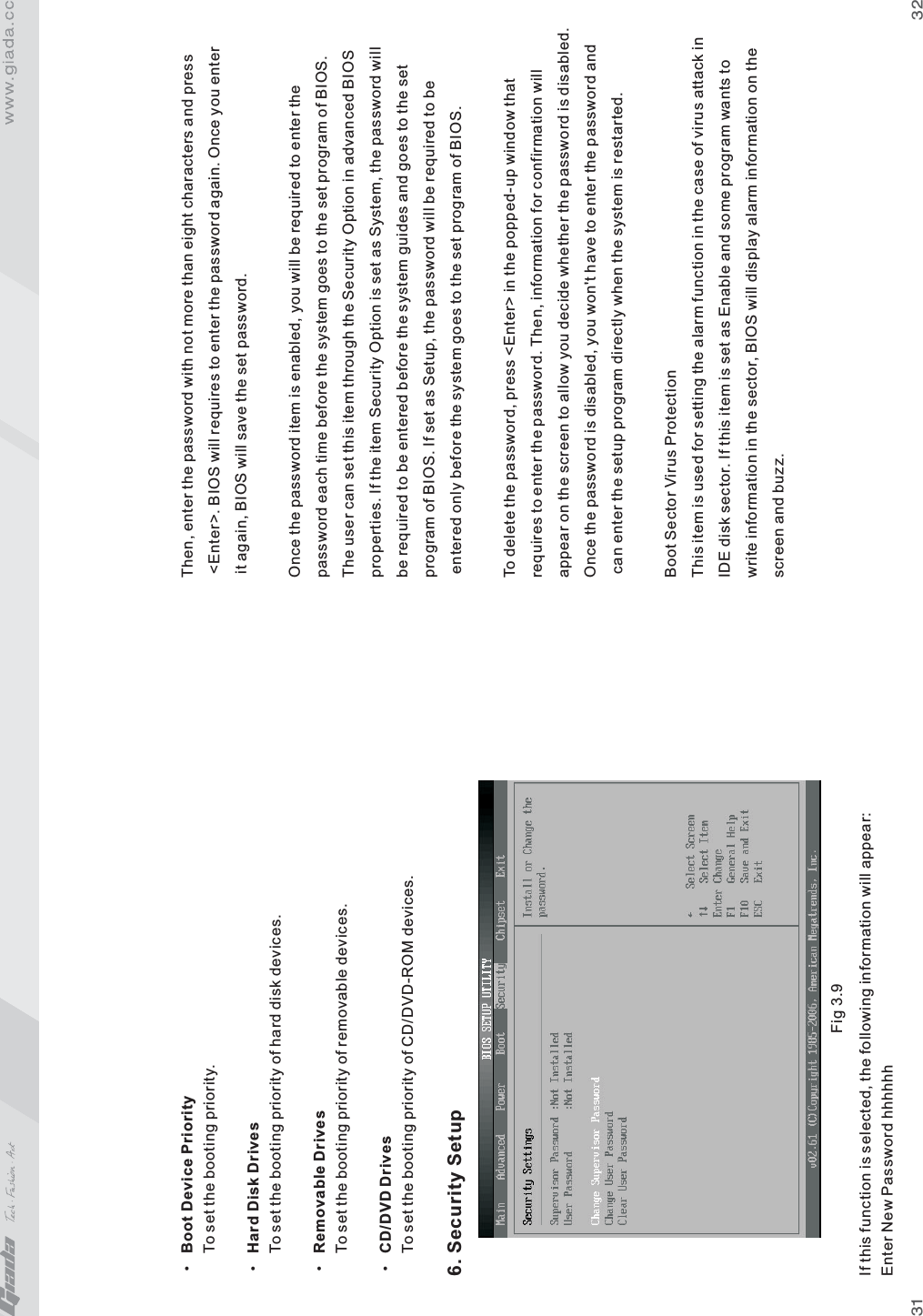
![34337. Setup for Chipset· NorthBridge Configuration To set the north bridge chip.· SouthBridge Configuration To set the south bridge chip.· RX780 Configuration · USB Configuration To set the USB device.Fig 3.10· USB Configuration· Legacy USB Support This item is used for enabling or disabling the supports for USB devices. If the default value [Auto] is selected, the system will automatically check whether USB device is available in its startup process. If USB device is available, USB controller will be activated. If not, not activated. If you set this item as [Disabled], the USB controller inside the system will be in OFF state, regardless of whether USB device is available. The options are [Disabled], [Enabled] and [Auto].· USB2.0 Controller Mode This item is used for setting the transfer rate mode of USB 2.0 device. The two options were HiSpeed (480 Mbps) and Full Speed (12 Mbps) mode. Fig 3.11](https://usermanual.wiki/Jehe-Technology-Development/MIH55.Giada-MI-H55-User-Manual-part2-REV1/User-Guide-1317490-Page-5.png)
